As the first carbon bike to roll out of Ibis’ Santa Cruz, California facility, the Exie is a drool-worthy machine representing a commitment to developing the lightest, strongest, and most capable short-travel bike possible. The Exie may appear to be just another featherweight cross country bike, but with relaxed geometry that promotes stability and confidence, it refuses to be reduced to a one-trick pony. Tested as part of our Short Travel Test Session, the Exie was the lightest bike in the group, with the least amount of travel. While we knew the dual-suspension lockout and fast-rolling tires would pay dividends on climbs, we could not wait to see how the small yet aggressive platform held its own once gravity took over.
Strengths | Weaknesses |
|
|
Highlights
- Full carbon frame hand made in Santa Cruz, CA
- DW-link suspension design
- 29-inch wheels
- 100mm (3.9-inches) rear travel // 120mm (4.7-inches) fork travel
- 67.2-degree head tube angle
- Size-specific seat angles
- 435mm chainstay length across all sizes
- FOX 34 SC Factory fork, Kashima, FIT 4 damper, remote lockout
- FOX Float DPS Factory shock, Kashima, remote lockout
- 185mm Bike Yoke Revive dropper post
- Shimano XT 12-speed drivetrain
- Shimano XT 2-piston brakes
- 180mm front rotor and 160mm rear rotor
- Ibis 933 aluminum wheels
- 29x2.4-inch Maxxis Rekon Race, EXO casing tire front and rear
- Boost 148x12 rear hub spacing
- Threaded bottom bracket
- Internally guided cable routing
- Seven-year warranty
- Measured weight (size large, no pedals): 25.7-pounds (11.6kg)
- MSRP: $7,999 USD (XT Build)
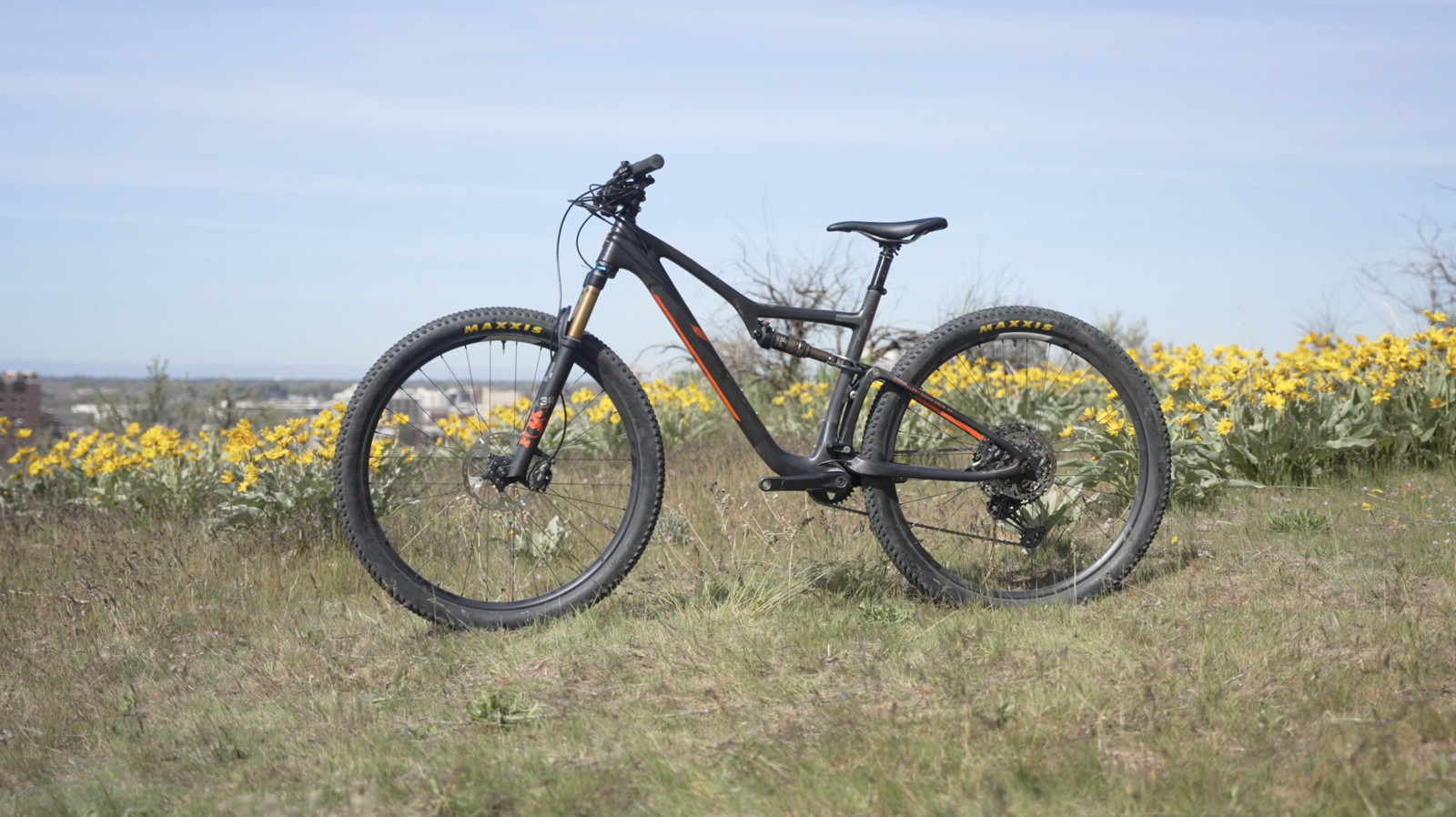
Exie Overview
It’s impossible to discuss the Exie without focusing on the craftsmanship of its handmade frame. In 2014, Ibis built a small carbon fiber prototyping lab to broaden their knowledge of carbon manufacturing. After a successful pilot production of their Ripley LS, Ibis realized they could build lighter and stiffer frames that took less time to produce than their overseas manufactured frames. Fast forward a few years, and Ibis unveiled the Exie: a 29-inch cross-country bike featuring 100mm of travel and a proven DW-link suspension design. Embodying everything they had learned about molding, layup patterns, and manufacturing, Ibis challenged themselves to make the Exie as light as possible while maintaining durability and stiffness.

To do so, they developed specific layup patterns that reduced the number of pieces needed to make a frame by 70% over their overseas produced frames. This drastically reduced the layup time and helped cut excess weight. Next, Ibis used energy-efficient aluminum molding tools to precisely control the curing cycle to achieve the desired strength, stiffness, and finish. Exie frames exit the molds requiring minimal finish work and receive a thin polymer coating that creates a tough finish and exposes the beautiful layup below. The lack of any paint also helps reduce weight further. In the end, the Exie strikes an impressive sub-2,000-gram frame weight that maintains.
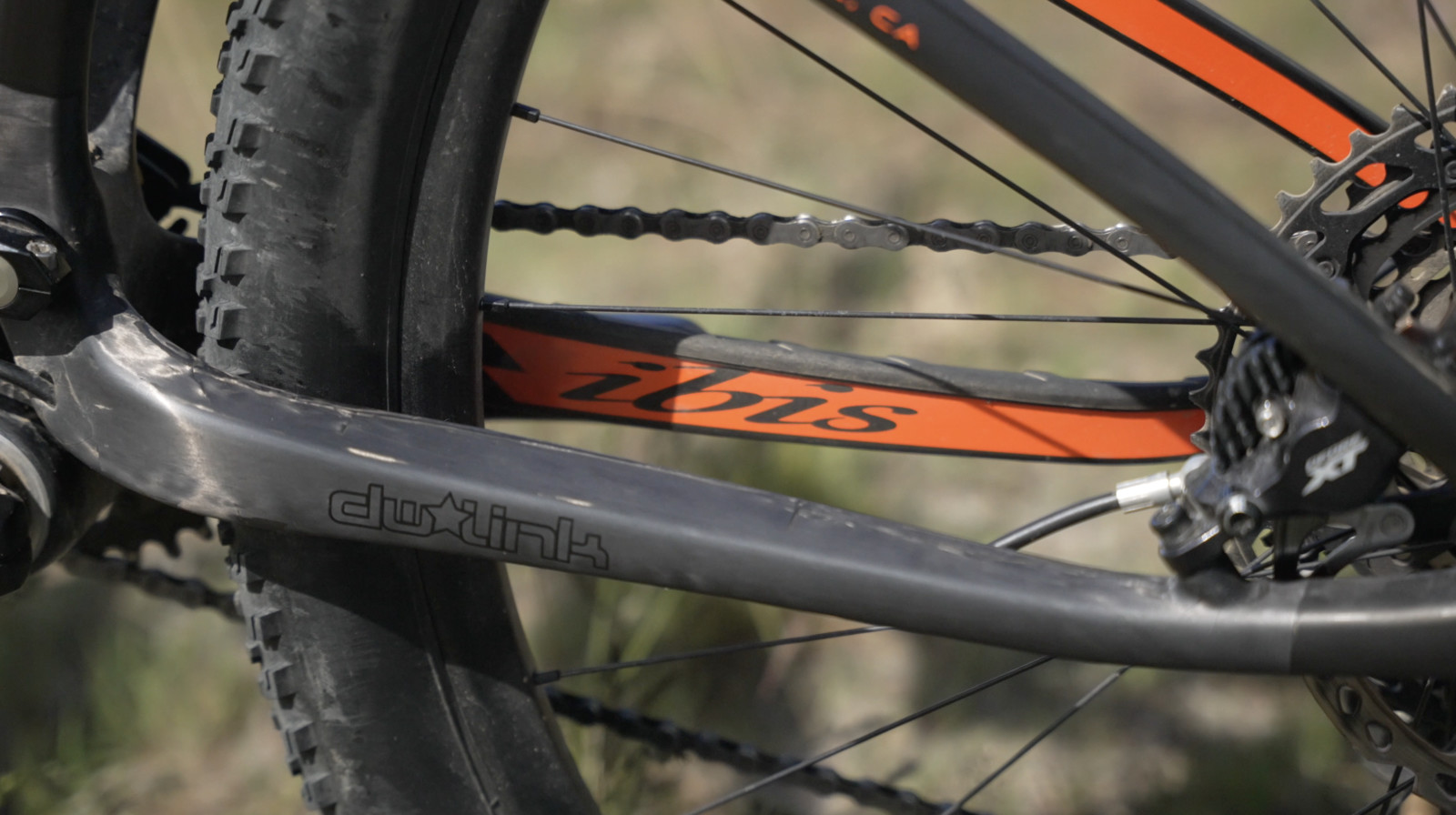
While the Exie’s light, hand-made frame takes center stage, Ibis took no shortcuts designing the rest of the bike. The lower link uses IGUS bushings for improved weight, stiffness, and durability, while all other pivots use standard bearings. All cables are internally guided through the frame, and dual water bottle mounts can be found inside the front triangle. A molded rubber chainstay protector limits drivetrain noise, while an integrated upper chain guide minimizes the chance of dropping a chain. Finally, the rear end fits up to 2.4-inch tires.
Geometry
Originally equipped with a 100mm fork, Ibis realized they had developed a bike with more to offer than just climbing efficiency. The Exie features balanced geometry, allowing the bike to perform well across varying terrain. Instead of using a longer stem, as you would find on most cross-country bikes, Ibis chose to use 50mm stems paired with a longer top tube and reach. This decision alone shifts rider weight rearward, improving stability and confidence descending. We tested a size large with a 478mm reach.

The Exie uses size-specific seat angles to achieve a comfortable riding position when seated for riders of varying sizes, and our size large rocked a 74.8-degree seat angle. The seat angle is also slacker than most bikes in this travel range. Across all sizes, the chainstay length is 435mm, and the head tube angle is 67.2-degrees, the steepest in the test.
Exie Build Kit
We tested the cheapest Exie XT build, which retails for $7,999 USD. The build consists of a FOX 34 Step Cast Factory fork, FOX Float DPS shock, Shimano XT 12-speed drivetrain, Shimano XT 2-piston brakes, Bike Yoke Revive 185mm dropper post, and Ibis 933 aluminum wheels with 2.4-inch Maxxis Rekon Race tires. Compared to the other bikes tested, the Exie had the most cross-country-focused components that achieved a lower weight but did diminish descending performance. In particular, the Maxxis Rekon Race tires and Shimano 2-piston XT brakes with only a 160mm rotor in the rear.
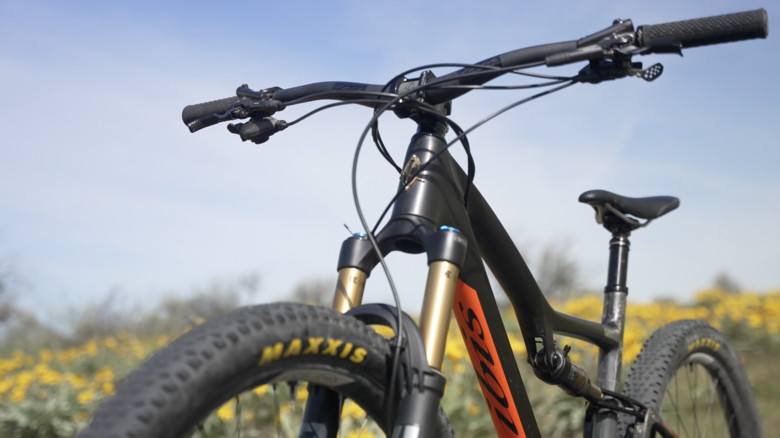

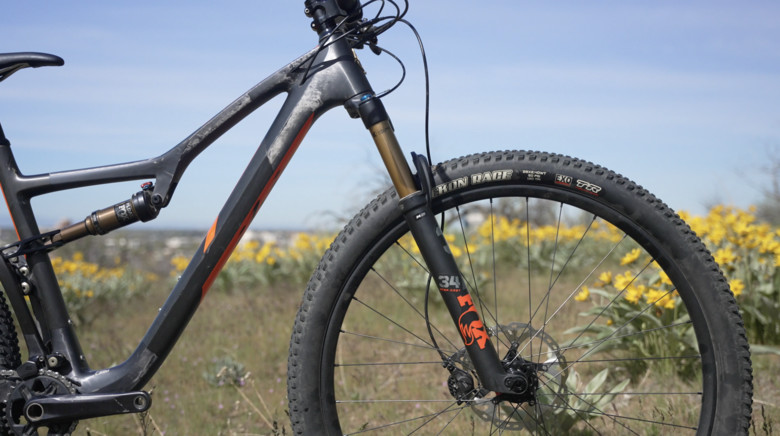

It’s worth noting that the Scott Spark 910 and Alchemy Arktos 120 we tested used many of the same components as the Exie but retailed for around $2,000 less. Designing and manufacturing a hand-built, premium carbon frame stateside is not cheap. While the craftsmanship and ride quality of the Exie is exceptional, riders will have to decide if it’s worth shopping boutique or going with a different bike, receiving many of the same components, and saving some cash for component upgrades down the road.
Rider Setup
During our two-week testing period, conditions ranged from loose over hardpack to wet and tacky topsoil. Each tester began with Ibis’ recommended 25% sag and then made adjustments to match their preferences and trail conditions.
Greg Montgomery | Jason Schroeder | John Palumbo |
|
|
|
On The Trail
Our Short Travel Test Sessions was conducted throughout the foothills of Boise, Idaho. The trails immediately outside downtown Boise feature flowing single track with high average speeds and occasional rock gardens. An aggressive, heavy bike with slack geometry is often too much. Instead, mid-weight bikes equipped to attack punchy climbs and carry speed on undulating terrain provide the best trail experience.

Downhill Performance
With our expectations set lower than the other test bikes, the Exie proved to be a more capable descender than it looked on paper. Sure, the bottom bracket did feel a tad higher than the other bikes, and the steeper head tube angle limited confidence in steep or technical sections. But overall, the Exie was lightning fast and incredibly fun.
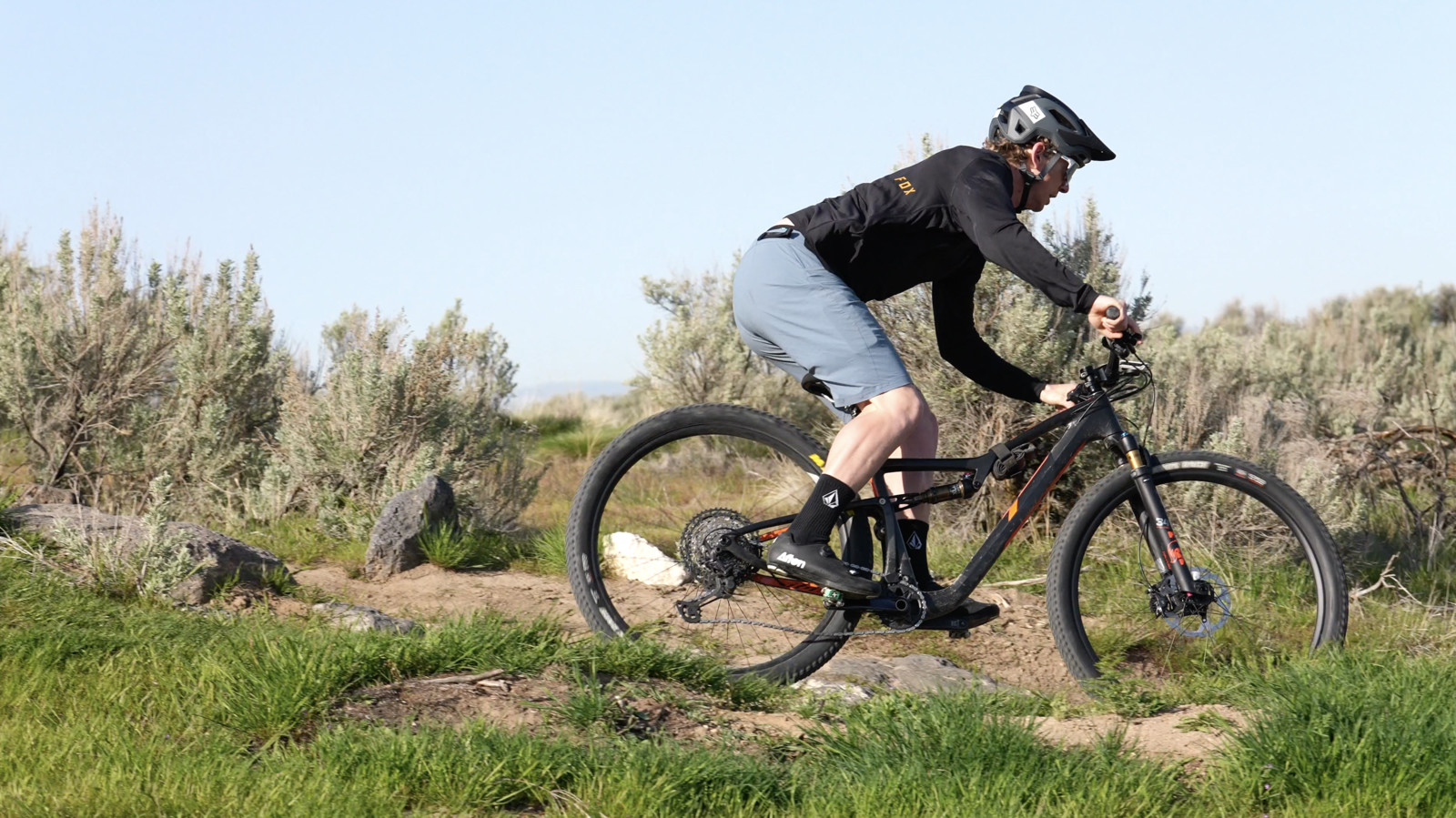
On flat, rolling terrain, the Exie rose above the rest, highlighted by its ability to maintain speed with little rider input thanks to its minimalistic tires, stiff frame, and firm suspension. At over a pound and a half lighter than the rest of the field, the Exie accelerated with ease and felt like a cross-country bike when sprinting. The low weight also gave the bike a lively personality that promoted popping between lines, skipping over rocks, and hitting trailside jumps. However, unlike the other test bikes that allowed us to load up the suspension and pump speed out of trails, the Exie was less responsive to rider input simply due to its lack of travel. Regardless, we carried an equal or higher average speed due to the low weight and efficiency of the suspension.

When trails become rougher, the relaxed geometry and component spec allowed the Exie to attack descents harder than most 100mm travel bikes. That said, it took more effort to stay on trail, and the margin for air was smaller than the other bikes. Big compressions were quite jarring, and we had to select our lines with the utmost precision to carry speed and maintain composure. When we did execute our lines and held on through the rubble, the Exie rewarded us with an exciting and fast ride.
Climbing Performance
Surprise, surprise, the Exie pedaled phenomenally. With a more forward and aggressive pedaling position, tossing a leg over the Exie felt like hopping on a cross-country bike that screamed climbing dominance. The low weight and minimal rolling resistance paid dividends going uphill, requiring substantially less effort to punch up climbs than the other bikes. Each pedal stroke seemed to take us further, and we completed test loops faster and with more energy remaining.
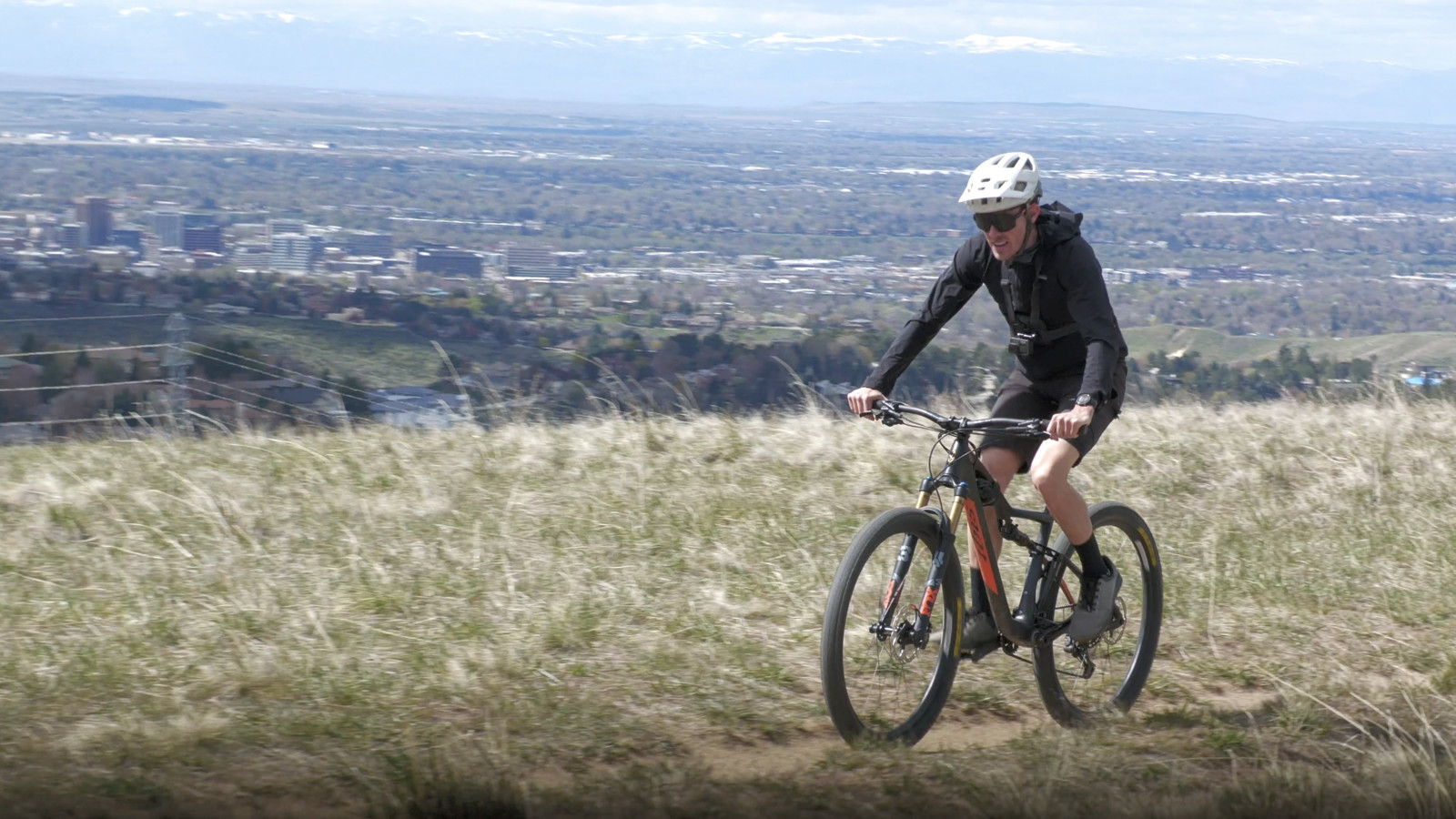
Engaging the Exie’s suspension lockout was more intuitive than the Scott Spark’s TwinLoc lever. However, we hardly used the lockout because the dw-link suspension design was firm, almost unaffected by pedaling forces, and offered more comfort and traction. The lockout undeniably provided the stiffest setup but was best saved for smooth trails or dirt roads. For most trails, the lockout created an uncomfortable pedaling platform that limited traction and would cause us to get jolted out of the saddle when encountering bumps, making it tough to maintain consistent pedal strokes. Like the Alchemy Arktos 120, the Exie was also slower with the suspension locked out during our Efficiency Test. If we had to pick a bike to tackle massive climbs, we would pick the Exie every time. The bike makes climbs you usually dread feel like a breeze and will leave extra gas in your tank, allowing you to ride further, faster.
Favorite Components - Cockpit, 185mm BikeYoke Dropper Post
One of the main reasons we felt so confident attacking descents with more intensity on the Exie than we typically would on a 100mm travel bike was because of the descent-focused cockpit and 185mm BikeYoke dropper post.

The 30mm rise Ibis carbon handlebar and 50mm long Industry Nine stem placed our body weight comfortably centered over the Exie, while the long dropper and short standover made it easy to shift our weight rearward. With lots of freedom to move within the bike, we could precisely place our weight in corners to maximize traction or lean back in technical bits to improve stability and control.
Least Favorite Component - Maxxis Rekon Race Tires, 160mm Rear Rotor
The biggest limiting factor that held the Exie back was the Maxxis Rekon Race tires that lacked adequate traction. For a bike that can hold its own on descents, the tires did not compliment the bike’s abilities and single-handedly kept us from reaching the Exie’s top speed. Where other bikes carried speed through sweeping corners, the Exie required a delicate approach. Once we started to lose traction, there was little hope that we could regain control. More aggressive tires would be an obvious upgrade that we can only imagine would drastically improve cornering confidence and stopping control with minimal effect on climbing performance.
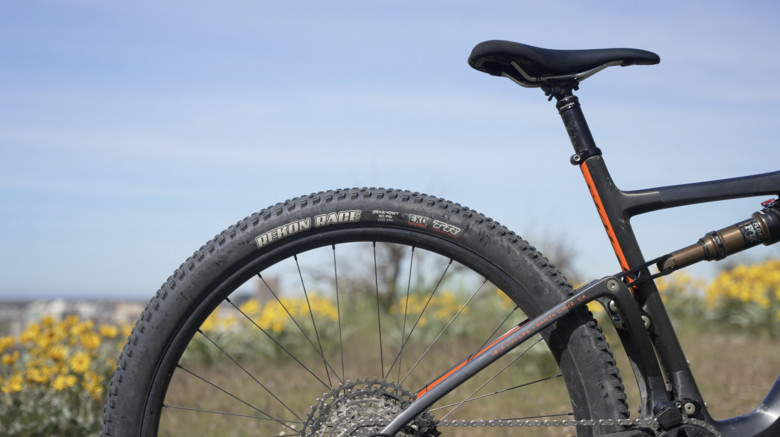
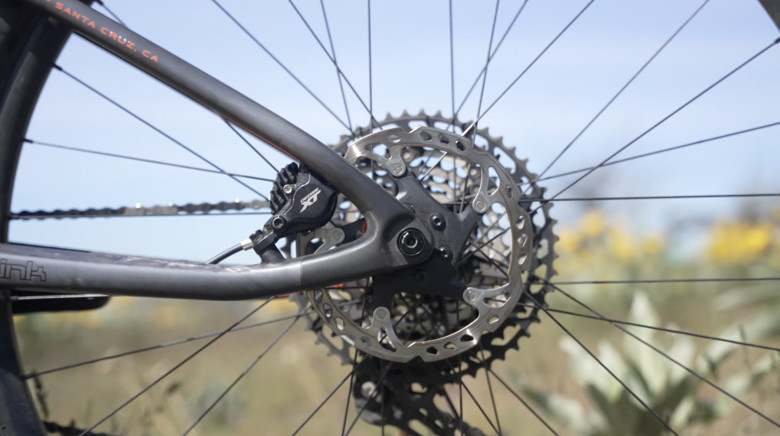
On top of having to tip toe around corners due to the grip-less tires, the 160mm rear rotor did not match the speeds the Exie was capable of achieving. The weight difference between a 160 and 180mm rotor is slim, but the performance is noticeable. We would opt for larger rotors to increase stopping power and bit, which would make the Exie faster by not having to drag the brakes as often to maintain control.
Vital Test Sessions Take Away
Ibis’ Exie offers a unique proposition to riders seeking a pedal-dominant bike but wanting extra safety and composure on descents. When climbing, the Exie efficiently glides up hills with exceptional speed. Every pedal stroke is transferred into forward momentum thanks to its stiff frame and firm suspension design that remains planted under pedaling forces. So much so, we don’t think many riders will find the lever-actuated lockout practical for everyday riding. Once pointed downhill, the Exie is truly impressive, and its relaxed geometry and methodical component spec foster confidence unlike many 100mm travel bikes can do. Precise, fast, efficient, and stable, the Exie flies across moderate terrain. In more challenging and rough situations, the Exie will let you push its limits but get ready to hold on for an exciting ride as there isn’t much room for error. While the Exie was the most surprising bike included in our Short Travel Test Sessions, it was also the most expensive. The lightweight, hand-finished frame will set you back a pretty penny, but the craftsmanship and ride quality is second to none for those who want an American-made cross-country bike on steroids.
For more information, please visit ibiscycles.com











View replies to: Vital MTB Test Sessions - Ibis Exie
Comments